Video of the Week:
Tomato Problems
Turfgrass:
Little Barley in Lawns
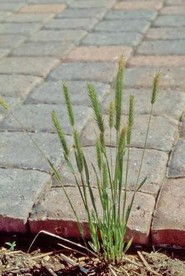
At this point there is no control for little barley other than a glyphosate product such as Roundup. However, Roundup will kill whatever it hits and cannot be used in a lawn situation. The only preemergence herbicide that I know that is labeled for lawn situations is Surflan. Monterey Lawn and Garden also sell it under the name of Weed Impede. Surflan can only be used on warm-season grasses (bermudagrass, buffalograss, zoysiagrass) and tall fescue grown in warm-season areas. Because little barley is a winter annual, apply the preemergence herbicide in September. (Ward Upham)
Brown Patch in Tall Fescue Lawns Publication
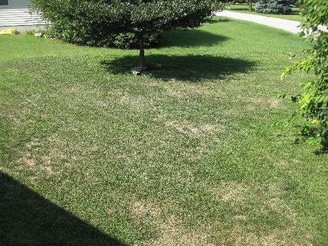
Fruit:
Fruit Reminders
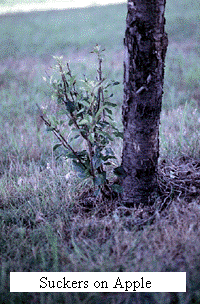
* Remove fruit from heavily loaded apples and peaches (if the flower buds weren’t killed by frost) to improve fruit size and prevent limbs from breaking. Apples should be spaced every 4 inches and peaches every 6 to 8. Note that is an average spacing. Two fruit can be closer together if the average is correct.
* Remove sucker growth from the base of fruit trees and grape vines.
* Remove water sprout growth from fruit trees. Water sprouts grow straight up.
* "Comb" new growth on grape vines so these new shoots hang down for greater exposure to sunlight.
* Continue disease and insect control to prevent fruit damage. (Ward Upham)
Cherry Leaf Spot
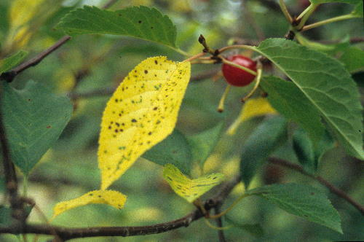
Removing diseased leaves at the end of the season can help, but fungicide applications during the growing season are also useful. No fungicide can be applied during harvest but captan (Hi-Yield Captan, Bonide Fruit Tree Spray, Gordon’s Liquid Fruit Tree Spray) can be applied up to harvest. If the disease is still active, an application after harvest and two weeks later is recommended. (Ward Upham)
Vegetables:
New Potatoes
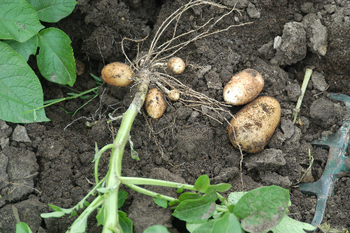
These young potatoes are very tender and prone to the skin “slipping” unless they are given a few hours to dry. Even then these immature potatoes will not store well. Red-skinned varieties are often preferred as they are the earliest to produce. (Ward Upham)
Flowers:
Deadheading Flowers

Perennials can also benefit by lengthening the blooming season. However, some gardeners enjoy the look of spent flowers of perennials such as sedum or purple coneflower. Also, the seed produced can be a good food source for birds.
Not all plants need to be deadheaded, including sedum 'Autumn Joy', melampodium, impatiens, most flowering vines, periwinkle (Catharanthus), and wishbone flower (Torenia).
Those that do increase bloom in response to deadheading include hardy geraniums, coreopsis, petunias, marigolds, snapdragons, begonias, roses, campanulas, blanket flowers, delphiniums, zinnias, sweet peas, salvia, scabiosa, annual heliotrope, geraniums (Pelargonium), and yarrow.
Deadheading is easily accomplished by removing spent flowers. With some plants, pinching between a thumb and finger can do this, but tough, wiry stems will require a scissors or pruning shears. (Ward Upham)
Plant Something in June
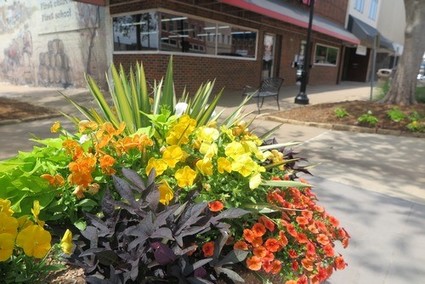
Notably, I’ve seen quite a few public planting containers with annual flowers in them. This means that people are thinking about color and about gifting their presence to others who might happen to walk by. Whether they notice or not, most folks feel closer ties to their communities and pride in their public places when ornamental plants are present. Think about it…if there weren’t any plants in your public spaces—at all—what would that feel like? Might it feel just a little harsher, tougher, and less cheerful? Even “big city” folks make an effort to bring landscaping nearer their high-rise buildings. The presence of plants has been documented to increase physical and mental health for people nearby, reduce stress, contribute to healthy aging, improve quality of life, and much more.
So what’s keeping you from planting something? Some say that the term “gardening” isn’t cool anymore. Even though many people continue to be drawn into the love of getting their hands dirty through the desire to grow their own food, they don’t want to be called a “gardener.” I also think there is some confusion about where to buy plants. Google Trends showed me “trees for sale,” “fruit trees,” and “garden plants” as popular searches. If you were looking for a place to purchase a plant, what would you think of? For me, of course, I think of “garden center,” but do you? What about “plant store”? This is an industry-wide question and I/we welcome suggestions from folks that find the identity of plant-related activities, well, lacking. Please, do share your ideas.
As a young person, I remember easily confusing the terms “annual” and “perennial”. It was honestly a mess of jargon for me. Now, of course, I know loads of jargon and terminology and find it easy to forget what it felt like to not know what to call things (uncomfortable and ignorant, in the most innocent of ways—I loved gaining all of that knowledge about plants). For the record, annuals are tender plants that complete their life cycles in one year and need to be replaced yearly (or seasonally—fun!), and they often have incredibly showy floral displays. Perennials last more than one year, often many years. Technically trees and shrubs are also perennials, but we generally talk about those types of plants comparatively—woody vs. non-woody. Trees and shrubs would be called “woody plants” with above-ground structures that are visible year round and perennials are plants that return year after year, but generally die back to the ground (or above-ground portions are no longer viable) in the winter.
Are there aspects of gardening that overwhelm you? Truly, I want to know. I can’t tell you how much joy it brings me to share my love of gardening with other people. The term “gardener” doesn’t bother me and I’m quite proud to have a lovely garden that everyone walking through my neighborhood can enjoy. They are often amazed that I, a relatively young person with two young kids (Oh, boy, my son turns 6 this month!) manages such a beautiful space. But I do, with not nearly as much time and effort as most people think. I just wish I could make more time to work out there. However, I am content with the time I do get to garden in this season of life with little kids and I’m grateful that I still have lots to look forward to as a “gardener for life.”
What about you? Do you have a plan in place to plant something? You really don’t have to have a plan, just grab what catches your eye when you see it. Find a spot for it and enjoy it. (Cheryl Boyer)
Pests:
Jumping Oak Gall
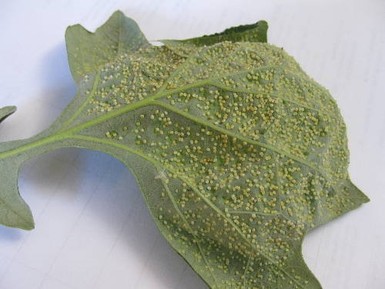
Jumping oak galls are caused by a very small, stingless wasp that lays eggs on developing oak leaf buds early in the spring. The larva that hatches from the egg will start to feed and juices from the saliva will cause the gall to form. The larva will feed inside the gall which offers a measure of protection. The galls are quite small; about the size of a pinhead. The gall eventually drops out of the leaf and falls to the ground. The galls will then jump due to movement of the larva inside the gall. This helps the insect move into the litter under the tree or into cracks in the soil where the insect will eventually pupate and overwinter. The mature wasp will chew its way out of the gall the next spring to start the cycle over again.
White oaks and members of the white oak family can be affected. Though heavy infestations can cause leaves to brown (or turn black), curl and possibly drop, otherwise healthy trees are not appreciably harmed. Even if it were more serious, it is too late to treat by the time symptoms are seen. Often natural controls prevent damage in subsequent years. Keep trees healthy by watering during dry weather. (Ward Upham)
Colorado Potato Beetle
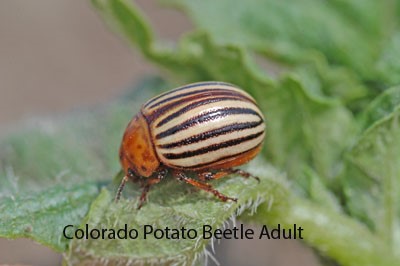
Both larvae and adults of this insect feed on potato (as well as tomato, eggplant, and pepper), causing extensive loss of foliage and reducing yields. Control strategies are varied and include:
- Hand picking: Useful for small gardens where plants can be checked a couple of times a week. Dropping beetles and larvae in a container of soapy water will lead to their demise.
- Floating row cover: This material can be placed over the planting and act as a physical barrier to the insects. Be sure to seal the edges. It is sometimes suggested to leave the floating row cover in place during the growing season because potatoes do not need to be pollinated to produce tubers. Often, this is not practical because it interferes with weed control.
- Insecticides: A number of products are registered including spinosad (Fertilome Borer, Bagworm, Leafminer and Tent Caterpillar Spray and Bonide Colorado Potato Beetle Beater Concentrate), permethrin (numerous trade names) and lambda- or gamma-cyhalothrin (Bonide Beetle Killer, Spectracide Triazicide). (Ward Upham)
Contributors: Cheryl Boyer, Nursery Crops and Garden Center Extension Specialist; Ward Upham, Extension Associate
 RSS Feed
RSS Feed
